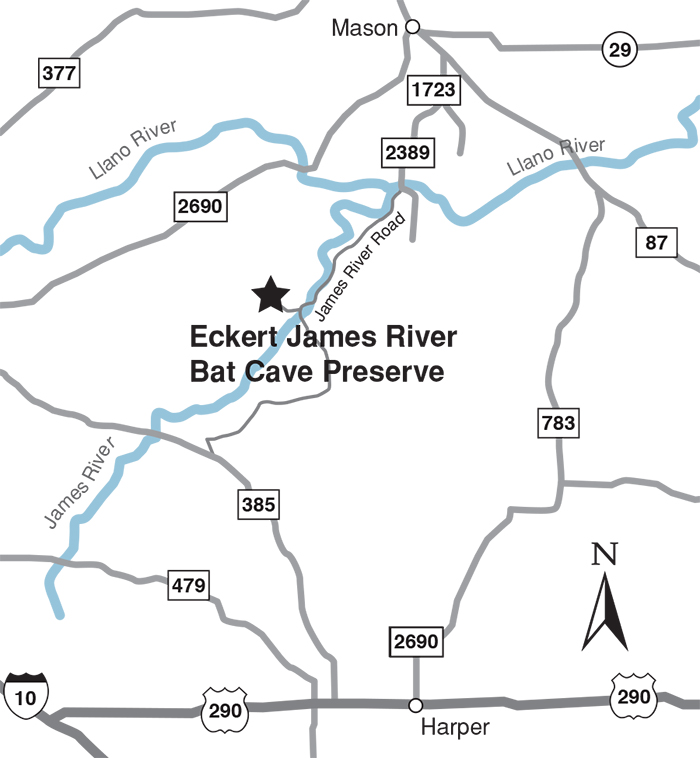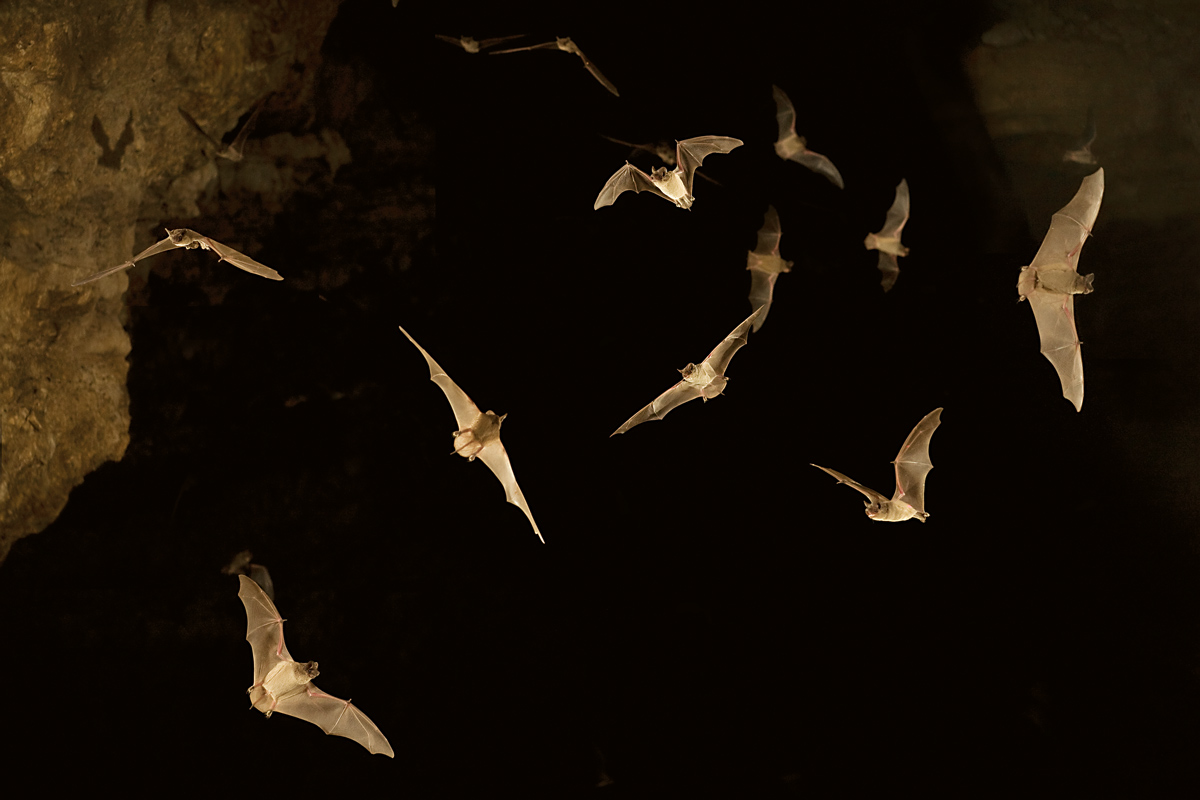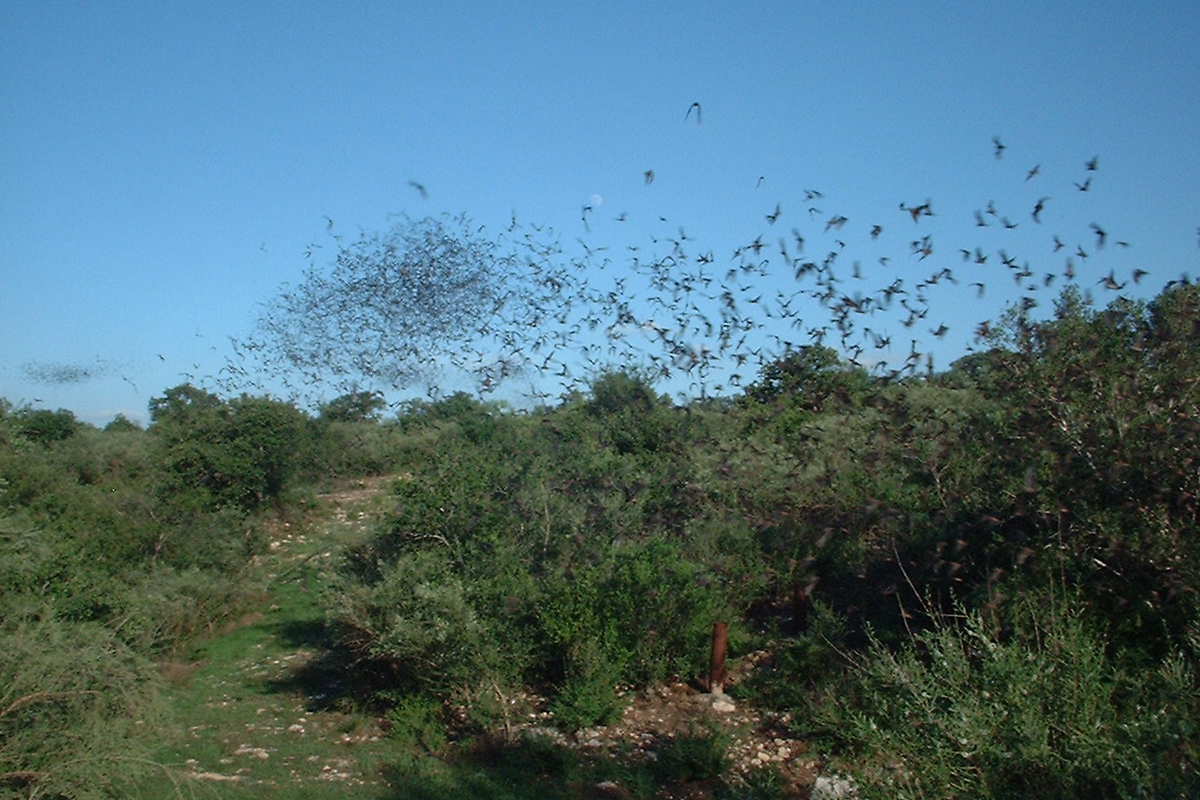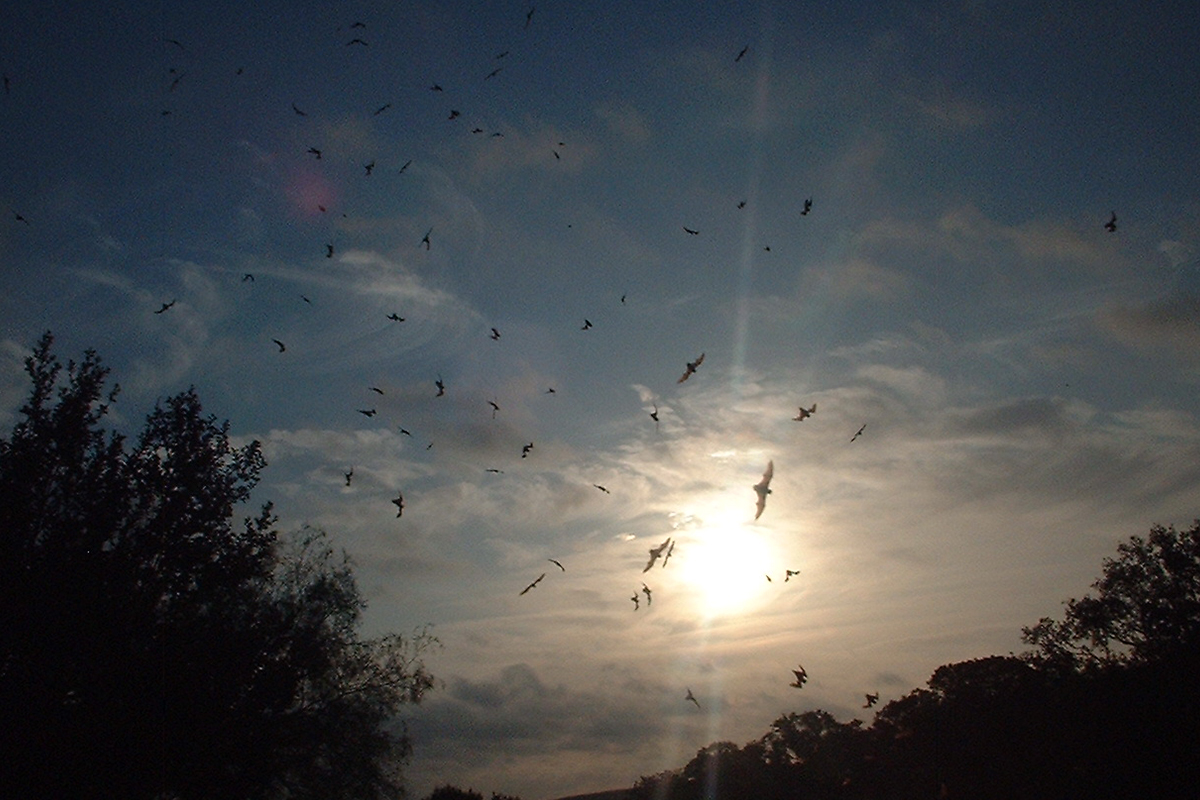Eckert James River Bat Cave Preserve
Texas hill country Region
This unique preserve is home to 4 million to 6 million Mexican free- tailed bats and one of the largest concentrations of warm-blooded animals in the world. The cave supports a maternity colony where females give birth to and raise their pups. Because this species roosts in such large numbers, colonies are vulnerable to disturbance and could be destroyed by a single destructive act. Additionally, the population recovery rate for a colony of Mexican free-tailed bats is slow because females give birth to only one pup each year. Richard Phillip Eckert and Virginia Eckert Garrett donated the cave to The Nature Conservancy in honor of their father, Lee Eckert, and grandfather, W. Phillip Eckert. The Eckert family acquired the property in 1907 when W. Phillip purchased the ranch on which the cave is located. In the early 1900s, W. Phillip mined the bat guano in the cave and sold it to local farmers for crop fertilizer. W. Phillip’s son, Lee Eckert, continued his father’s legacy of bat conservation and guano mining and left the site to his wife and children when he passed away in 1967. This generation of Eckerts wanted to ensure permanent protection of the bats, so in 1990, they donated the cave to The Nature Conservancy on condition that the land around the cave remain open to the public for enjoyment and education, as it had been for more than 100 years.
Visitation Info
Fees
- $5 per person; free for children 5 and under.
Reservations
Reservations not taken, except special group reservations.
Hours
Thursday through Sunday from 6 p.m. to 9 p.m., mid-May to early October.
ADA Accessible
No; however prior arrangements can be made for help in getting access.
Ownership
The Nature Conservancy of Texas
Contact Information
- (325) 347-5970 (Information Line)
- www.nature.org
Multimedia
Location & Directions

From the intersection of TX 29 and US 87 in Mason, go south on US 87 for 1.2 miles to the intersection with FM 1723. Go south on FM 1723 for 2.3 miles to FM 2389. Take a right onto FM 2389 for 4.8 miles to James River Road. You will cross two bridges over the Llano River just before reaching James River Road. Continue on James River Road for 8.2 miles to the Eckert James River Bat Cave Preserve. Note: just before reaching the preserve, you must cross the James River in your vehicle. River levels can be as low as a few inches in dry conditions and higher during wet seasons.
Bat Fact
Although bats can see quite well they also use echolocation or bio-sonar. The bats send out ultrasonic pulses from their nose or mouth. These sounds bounce off surrounding objects and back to a bat’s ears helping it to navigate and find food.


